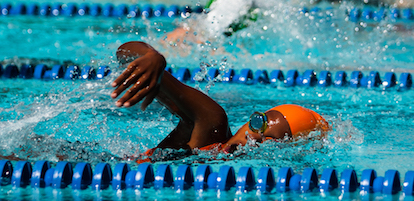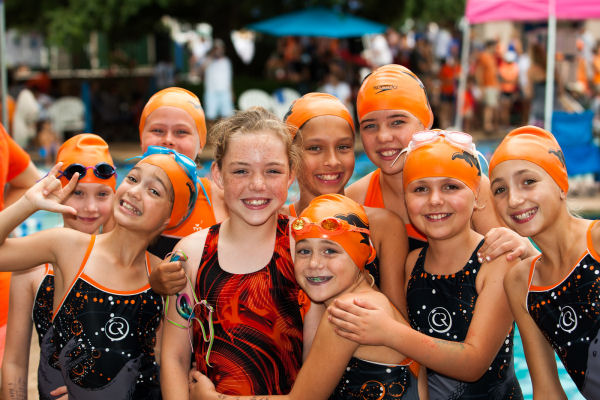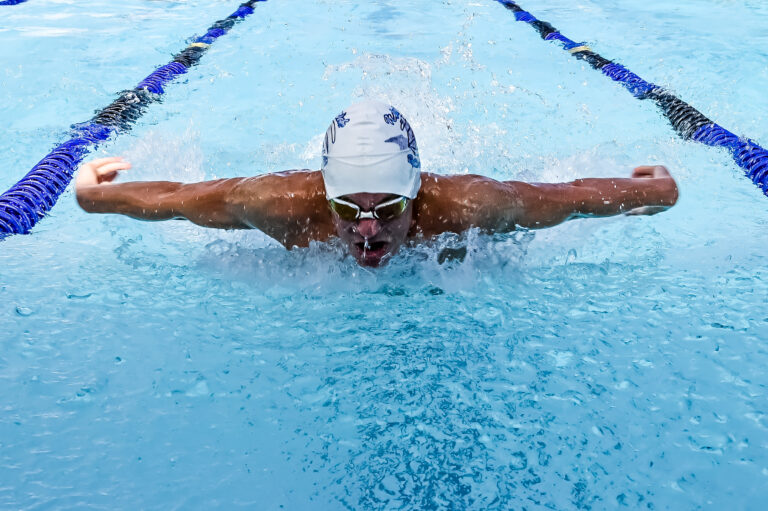Summer is here at last and, if you’re a swim parent, you’re most likely in the middle of all things summer swim related. We wanted to take a moment to explain one of summer swim’s more confusing tools: the meet day heat sheet. Whether you’re a new swim parent wanting clarification or a veteran needing a refresher, we’re here for you! Read on for more details.
Okay, what’s the low-down?
Swim meets are split up into “events.” Events are defined by gender, age, distance, and stroke. In effect, event 1 of a swim meet might be the boys’ (gender) 6 and under (age) 25 yard (distance) freestyle (stroke). These events are then split into “heats.” Heats are organized by time to encourage fairness and let swimmers compete against athletes with times similar to their own. Though dependent on the meet, heats are usually ordered either from slowest to fastest or fastest to slowest (with either the first or last heat featuring the fastest times). Last but not least, each heat is divided into lanes. Swimmers are sorted into lanes also based on time; the heat’s fastest time is typically in the middle lane and the slowest times in the outer lanes. Essentially, the swimmer with the fastest time in the event will be in the middle lane of the fastest heat.

Now you may be wondering how this information applies to the infamous heat sheet. How do you read those? What do all the names and numbers mean? The event number will always be at the top of the event listing in the heat sheet with the heats then clustered underneath. The lanes are listed within each heat (with swimmers’ names beside their respective lane).
So what about arm marking? What is that?
Arm marking is extremely common in the summer swim world and even extends into younger age groups of year-round club swimming. It’s an easy way for swimmers to track their events and know where they should be for each one. Sometimes parents mark their kiddos’ arms before the meet and sometimes age group tent parents (volunteers assigned to sit with swimmers during the meet) will do this after warm-up. It’s always best to check your team’s best practices.
What does it look like?
When marking a swimmer’s arm, first draw a grid with three Columns: E (for event), H (for heat), and L (for lane). This is best done with a sharpie and when the swimmer is not wet (otherwise the information could be washed off or become confusing/illegible). Place the swimmer’s first race at the top: locate the event number and write under the E, the heat number and write under H, and the lane number and write under L. It doesn’t hurt, especially when dealing with young or new swimmers, to also write out what the event is next to these digits.
In effect, a swimmer in event 1: the boys’ 6 and under 25 yard freestyle who is swimming in heat 3, lane 4 would have the following to start their grid:
E H L
1 3 4 (25 free)
You will follow this process for all events (could be anywhere between 2-6 sequences of numbers, depending on the athlete’s age). For relays, draw a dash next to the lane number and write the position of the swimmer after (for example, if they are swimming in lane 2 and 4th on the relay, write 2/4)
Heat sheets may also display team or pool records above each event (giving swimmers something extra to strive towards) as well as start times. The display of start times is helpful but summer swim meets are liable to run long or short. Make sure you check in occasionally to track progress and so that you don’t miss one of your swimmers’ events!
We hope you found this information about the meet day heat sheet useful and, if so, encourage you to pass along to anyone else who may also benefit from reading. Best of luck this summer from all of us at SwimTopia and happy heat sheet reading!



